
 This post features three case studies that highlight the versatility and effectiveness of the Deep Lock® process across a variety of applications.
This post features three case studies that highlight the versatility and effectiveness of the Deep Lock® process across a variety of applications.
Deep Soil Stabilization at a Shopping Center
- Location: City Creek Center, Salt Lake City.
- Problem: A trench filled with pea gravel began settling, affecting underground power lines.
- Solution: The trench was stabilized using structural polymers.
- Process: An Alchatek consultant developed an injection plan, and the geotech crew installed 10 injection tubes 30 feet deep, pumping approximately 1 gallon per vertical foot.
- Outcome: The site work was completed in just two days, allowing for the rapid continuation of the construction work.
Deep Soil Stabilization for New Construction
- Location: A commercial construction site.
- Problem: The need to stabilize gravel and soil held in place by sheet pile panels between the panels and the foundation.
- Solution: Structural polymers were used due to their ability to permeate soil and encapsulate gravel into a solid mass.
- Process: The crew injected the polymer to a depth of about 12 feet, grouting to refusal, ensuring the entire layer of soil and gravel was locked in place.
- Outcome: The stabilized soil and gravel provided a solid supportive wall for the foundation when the sheet piles were removed, and the gap filled with cement.
Deep Soil Stabilization at a Two-Story House
- Location: A two-story house in North Carolina, built on poorly compacted fill dirt.
- Problem: The house showed signs of settling, with interior cracks and uneven floors.
- Solution: A structural foam was used for its high-strength, hydro-insensitive properties, ideal for densifying soil and stabilizing foundations.
- Process: 18 injection tubes were installed to depths of 7 feet and 3.5 feet, injecting foam beneath exterior footings and load-bearing interior walls.
- Outcome: The stabilization process not only densified the soil and stopped the settlement but also achieved a half-inch lift both from exterior and interior injections, impressing both the customer and the engineer.
These case studies demonstrate the adaptability and effectiveness of the Deep Lock® process in addressing diverse soil stabilization challenges. From commercial construction sites to residential properties, Deep Lock® provides a reliable and efficient solution for soil stabilization needs.



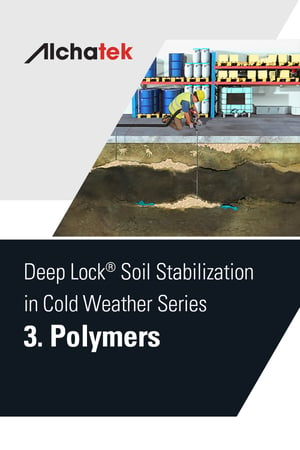 In the world of soil stabilization and concrete leveling, the choice of materials is as important as the technique used. Alchatek's Deep Lock® process utilizes a range of specialized structural polymers, each designed to cater to specific stabilization needs.
In the world of soil stabilization and concrete leveling, the choice of materials is as important as the technique used. Alchatek's Deep Lock® process utilizes a range of specialized structural polymers, each designed to cater to specific stabilization needs.
 The Deep Lock® process, a robust and effective method for soil stabilization, requires specialized equipment to ensure precision and efficiency. Here's a breakdown of essential equipment for Deep Lock® soil stabilization in cold weather:
The Deep Lock® process, a robust and effective method for soil stabilization, requires specialized equipment to ensure precision and efficiency. Here's a breakdown of essential equipment for Deep Lock® soil stabilization in cold weather:
 Deep Lock® is a specialized deep soil stabilization process developed by Alchatek. It involves injecting a structural polymer deep into the soil, where it expands and solidifies. This process enhances the stability and strength of the soil, making it an effective solution for various geotechnical challenges. One key feature of Deep Lock® is its ability to stabilize soil below the freeze/thaw line, making it particularly useful in cold weather conditions.
Deep Lock® is a specialized deep soil stabilization process developed by Alchatek. It involves injecting a structural polymer deep into the soil, where it expands and solidifies. This process enhances the stability and strength of the soil, making it an effective solution for various geotechnical challenges. One key feature of Deep Lock® is its ability to stabilize soil below the freeze/thaw line, making it particularly useful in cold weather conditions.
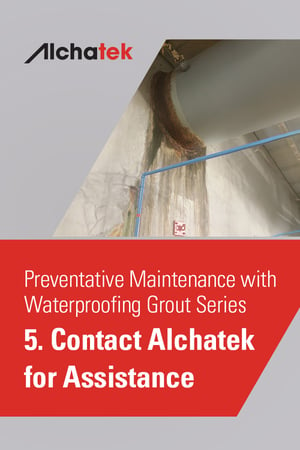 Alchatek's role in the fight against water damage is defined by expert technical guidance and specialized contractor referrals.
Alchatek's role in the fight against water damage is defined by expert technical guidance and specialized contractor referrals.


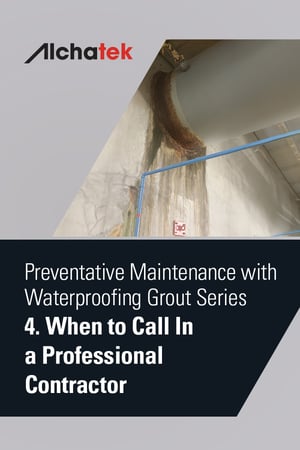 Water infiltration, even in its smallest form, can be a harbinger of more significant issues. The key is not to wait until the problem becomes extensive or recurrent but to seek professional assessment and intervention at the first indication of water presence.
Water infiltration, even in its smallest form, can be a harbinger of more significant issues. The key is not to wait until the problem becomes extensive or recurrent but to seek professional assessment and intervention at the first indication of water presence.
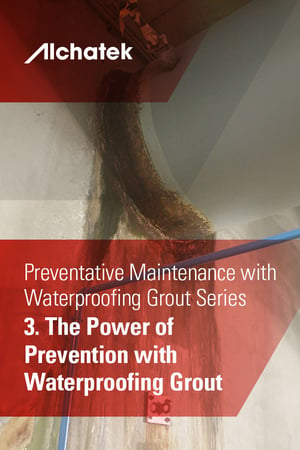 Polyurethane waterproofing grout is a type of sealant used extensively in construction and maintenance for its exceptional ability to prevent water ingress. It is a liquid polymer that, once applied, solidifies into a durable, water-resistant barrier. This grout is particularly effective in sealing cracks, joints, and other potential points of water entry in structures.
Polyurethane waterproofing grout is a type of sealant used extensively in construction and maintenance for its exceptional ability to prevent water ingress. It is a liquid polymer that, once applied, solidifies into a durable, water-resistant barrier. This grout is particularly effective in sealing cracks, joints, and other potential points of water entry in structures.
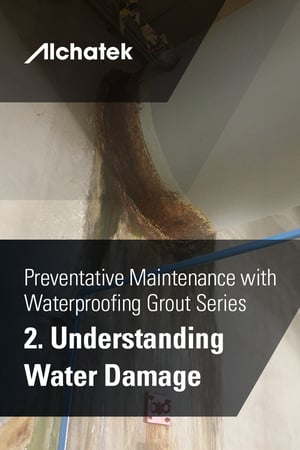 Water's destructive capacity stems from its ability to penetrate and alter the very materials that buildings are made of. Here are some key ways in which water inflicts damage:
Water's destructive capacity stems from its ability to penetrate and alter the very materials that buildings are made of. Here are some key ways in which water inflicts damage:
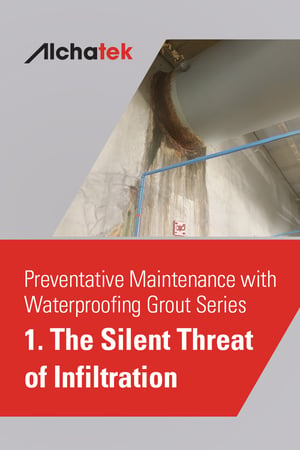 In the realm of property management and building maintenance, certain risks lurk unseen, often underestimated in their potential for destruction. Among these, water infiltration stands as a silent, insidious threat. Its capacity for causing extensive, sometimes catastrophic damage is not to be overlooked.
In the realm of property management and building maintenance, certain risks lurk unseen, often underestimated in their potential for destruction. Among these, water infiltration stands as a silent, insidious threat. Its capacity for causing extensive, sometimes catastrophic damage is not to be overlooked.
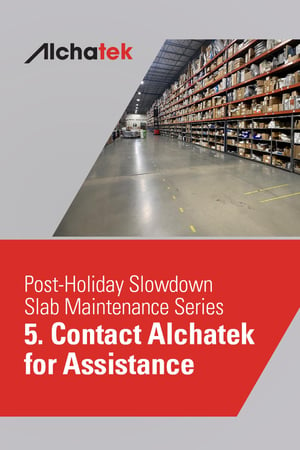 Alchatek, with its expertise in commercial property maintenance, stands ready to provide comprehensive support in addressing your concrete slab needs.
Alchatek, with its expertise in commercial property maintenance, stands ready to provide comprehensive support in addressing your concrete slab needs.
